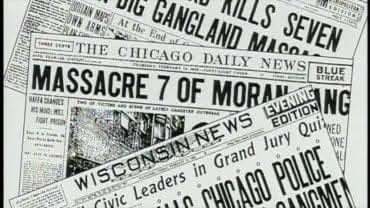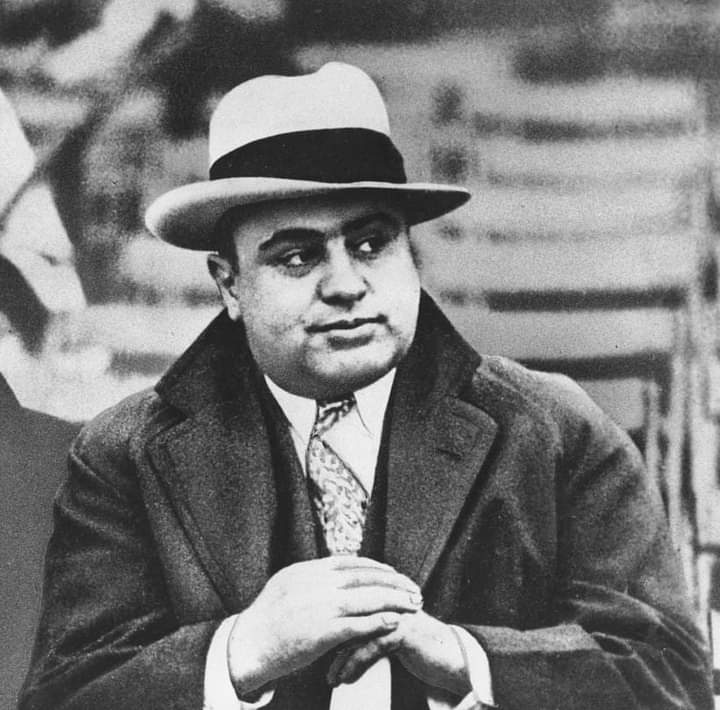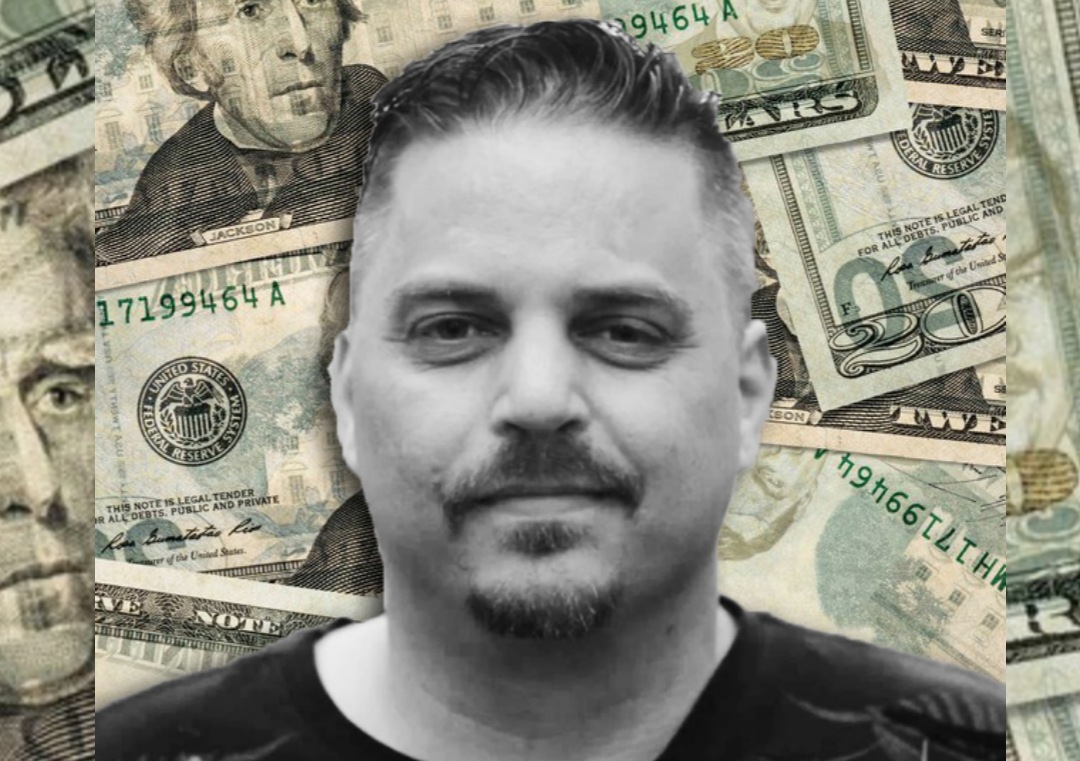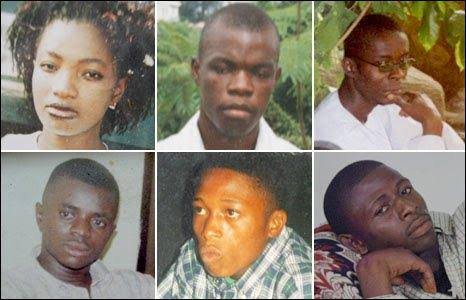GANG WAR: Remembering St. Valentine's Day Massacre of 1929

Did you know that the St. Valentine’s Day Massacre, as it is now called, was the culmination of a gang war between arch rivals Al Capone and Bugs Moran in the early 19th century?
At 10:30 a.m. on Saint Valentine's Day, Thursday, February 14, 1929, seven men were murdered at the garage at 2122 North Clark Street, in the Lincoln Park neighborhood of Chicago's North Side, United States, in what has now been popularly known as the St. Valentine's Day Massacre. The victims were shot by four men using weapons that included two Thompson submachine guns. According to witnesses, two of the shooters were wearing police uniforms, while the others wore suits, ties, overcoats, and hats. The men in police uniforms were seen leading the other men at gunpoint out of the garage after the shooting as a decoy.
The victims of the massacre are Peter Gusenberg (a front-line enforcer for the Moran organizations), Frank Gusenberg (the brother of Peter Gusenberg and also an enforcer), Albert Kachellek alias "James Clark" (Moran's second in command), Adam Heyer (the bookkeeper and business manager of the Moran gang), Reinhardt Schwimmer (an optometrist who had abandoned his practice to gamble on horse racing and associate with the gang), Albert Weinshank (who managed several cleaning and dyeing operations for Moran), and John May (an occasional car mechanic for the Moran gang).
The incident resulted from the struggle to control organized crime in the city during Prohibition between the Irish North Siders, headed by George "Bugs" Moran, and their Italian Chicago outfit rivals led by Al Capone. Al Capone was widely assumed to have been responsible for ordering the massacre, despite being at his Florida home at the time of the massacre, as are members of the Chicago Police Department who allegedly wanted revenge for the killing of a police officer's son.
The massacre was an attempt to eliminate Bugs Moran, head of the North Side Gang, and the motivation for the plan may have been the fact that some expensive whisky illegally imported from Canada via the Detroit River had been hijacked while it was being transported to Cook County, Illinois.
George “Bugs” Moran was a career criminal who ran the North Side gang in Chicago during the bootlegging era of the 1920s. He fought bitterly with “Scarface” Al Capone for control of smuggling and trafficking operations in the Windy City. Throughout the 1920s, both survived several attempted murders. On one notorious occasion, Moran and his associates drove six cars past a hotel in Cicero, Illinois, where Capone and his associates were having lunch and showered the building with more than 1,000 bullets. A $50,000 bounty on Capone’s head was the final straw for the gangster. He ordered that Moran’s gang be destroyed.
Several factors contributed to the timing of the plan to kill Moran. Earlier in the year, North Sider Frank Gusenberg and his brother Peter unsuccessfully attempted to murder Jack McGurn. The North Side Gang was complicit in the murders of Pasqualino "Patsy" Lolordo and Antonio "The Scourge" Lombardo. Both had been presidents of the Unione Siciliana, the local Mafia, and close associates of Capone. Moran and Capone had been vying for control of the lucrative Chicago bootlegging trade. Moran had also been muscling in on a Capone-run dog track in the Chicago suburbs, and he had taken over several saloons that were run by Capone, insisting that they were in his territory.
The plan was to lure Moran to the SMC Cartage warehouse on North Clark Street on February 14, 1929, to kill him and perhaps two or three of his lieutenants. It is usually assumed that the North Siders were lured to the garage with the promise of a stolen, cut-rate shipment of whiskey, supplied by Detroit's Purple Gang which was associated with Capone. The Gusenberg brothers were supposed to drive two empty trucks to Detroit that day to pick up two loads of stolen Canadian whiskey. All of the victims were dressed in their best clothes, with the exception of John May, as was customary for the North Siders and other gangsters at the time.
Most of the Moran gang arrived at the warehouse by approximately 10:30 a.m., but Moran was not there, having left his Parkway Hotel apartment late. He and fellow gang member Ted Newberry approached the rear of the warehouse from a side street when they saw a police car approaching the building. They immediately turned and retraced their steps, going to a nearby coffee shop. They encountered gang member Henry Gusenberg on the street and warned him, so he too turned back. North Side Gang member Willie Marks also spotted the police car on his way to the garage, and he ducked into a doorway and jotted down the license number before leaving the neighborhood.
Capone's lookouts likely mistook one of Moran's men for Moran himself, probably Albert Weinshank, who was the same height and build. The physical similarity between the two men was enhanced by their dress that morning; both happened to be wearing the same color overcoats and hats. Moran waited outside, thinking that his gunmen inside were being arrested in a raid. However, the disguised assassins were actually killing the seven men inside.
The murdered men included Moran’s best killers, Frank and Pete Gusenberg. Inside the garage, the only survivors in the warehouse were May's dog "Highball" and Frank Gusenberg — despite 14 bullet wounds. When real police officers appeared on the scene and asked who had shot him, the mortally wounded Gusenberg kept his code of silence, responding, “No one, nobody shot me.” He died three hours later, refusing to utter a word about the identities of the killers.
On the seventh anniversary of the massacre, Jack McGurn, one of the Valentine’s Day hitmen, was killed in a crowded bowling alley with a burst of machine-gun fire. McGurn’s killer remains unidentified, but was likely Moran, though he was never charged with the murder.
Despite some good leads, the St. Valentine’s Day Massacre, as it came to be known, was never solved. Capone had an airtight alibi (he was in Miami that night) and managed to dodge accusations that he had ordered the hit. But it did serve a climactic purpose in the gangster era. The dramatic scope of the crime and the headlines it garnered focused so much attention on Al Capone that President Herbert Hoover told his Treasury department to “get that man.”
The St. Valentine’s Day Massacre actually proved to be the last confrontation for both Capone and Moran. Capone was jailed in October 1931– on tax evasion charges after conviction and sentenced to 11 years in federal prison. He served part of his sentence at Alcatraz and was released in 1939, ill and mentally diminished. He died in 1947. Moran lost so many important men that he could no longer control his territory. He was relegated to small-time robberies until he was sent to jail in 1946. He died in Leavenworth Federal Prison in 1957 of lung cancer.
SOURCES:
Wikipedia and History
#penglobalcrime #stvalentinedaymassacre
_1754475682.webp)


